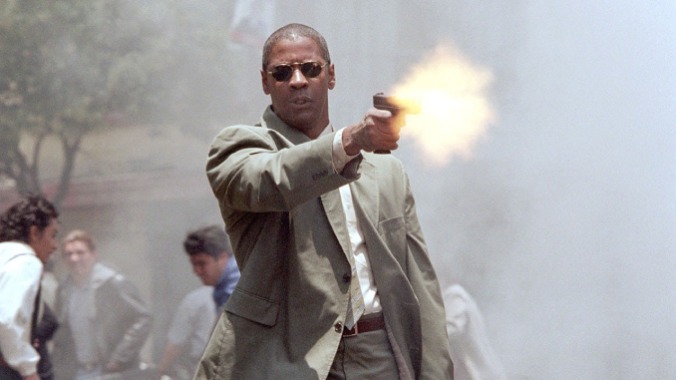Man on Fire Turned Mexico City Into a War Zone 20 Years Ago
Tony Scott’s impressionistic revenge tale remains a mini-genre of one.

Action movies would have you believe that the wider world exists for white ladies to get kidnapped in, and for men recovering from their shady, painful pasts to wreck house and rack up the bodies while they go rescue said white ladies. (They would also have you believe that foreign countries are all either ludicrously desaturated or else kind of orange.) If there’s any Spanish going on, lord help you: American audiences know just enough of it that you’ll get some characters who talk in Hollywood Spanglish while also having well-paid Latin American actors say lines like “He belongs to a brotherhood called ‘La Hermandad.’” (“Hermandad” is “brotherhood!” Come on!!) Man on Fire, Tony Scott’s 2004 contribution to a year in cinema that belonged almost entirely to the revenge picture, does not challenge any of this Gung Ho American Savior nonsense at all.
But being as Man on Fire also features Denzel Washington at his stone-cold killing best, skeezy supporting characters that include Giancarlo Giannini, Mickey Rourke and Christopher Walken, and the white girl in question is Dakota Fanning doing a way better job the situation calls for, I give it a pass. Scott went for a feverish, impressionistic haze of a revenge flick that seems like it was meant to kick off an entirely new subgenre. Instead we just got this movie and the videogame Max Payne 3. I’ll take it.
It’s true enough that abductions remain common in parts of Mexico. Man on Fire paints a picture of a callous, dangerous city where a kidnapping-industrial complex run by a kingpin called “La Voz” organizes the capture and ransom of poorly protected rich people. Corruption and thievery is so rampant that most police are simply in the pocket of the kidnappers.
Creasy (Washington) is a semi-retired badass with a drinking problem. Rayburn (Walken) is his friend and former handler, living it up in Mexico. He recommends Creasy for a gig as a bodyguard—it won’t be much of an assignment, so if he’s half-cut it won’t really matter. Brian Helgeland’s script is pretty mercenary about the whole operation: Creasy openly admits to being a functioning alcoholic who can only provide as much protection as he’s paid. His employer, family patriarch Samuel (Marc Anthony) is pretty blasé about it all, operating on cynical advice from the family lawyer (Rourke) to keep the overhead on his daughter’s security low. But Samuel’s wife Lisa (Radha Mitchell) sees something in Creasy that convinces her to hire him on the spot.
The important relationship here, though, is with Creasy’s young principal: Lupita (Fanning), who steals the first reel of the film. Fanning, who is still teeny-tiny in this movie, melts Creasy’s frozen heart, unknowingly pulling him back from the brink of suicide. So of course she will need to get kidnapped.
-

-

-

-

-

-

-

-

-

-

-

-

-

-

-

-

-

-

-

-

-

-

-

-

-

-

-

-

-

-

-

-

-

-

-

-

-

-

-

-








































